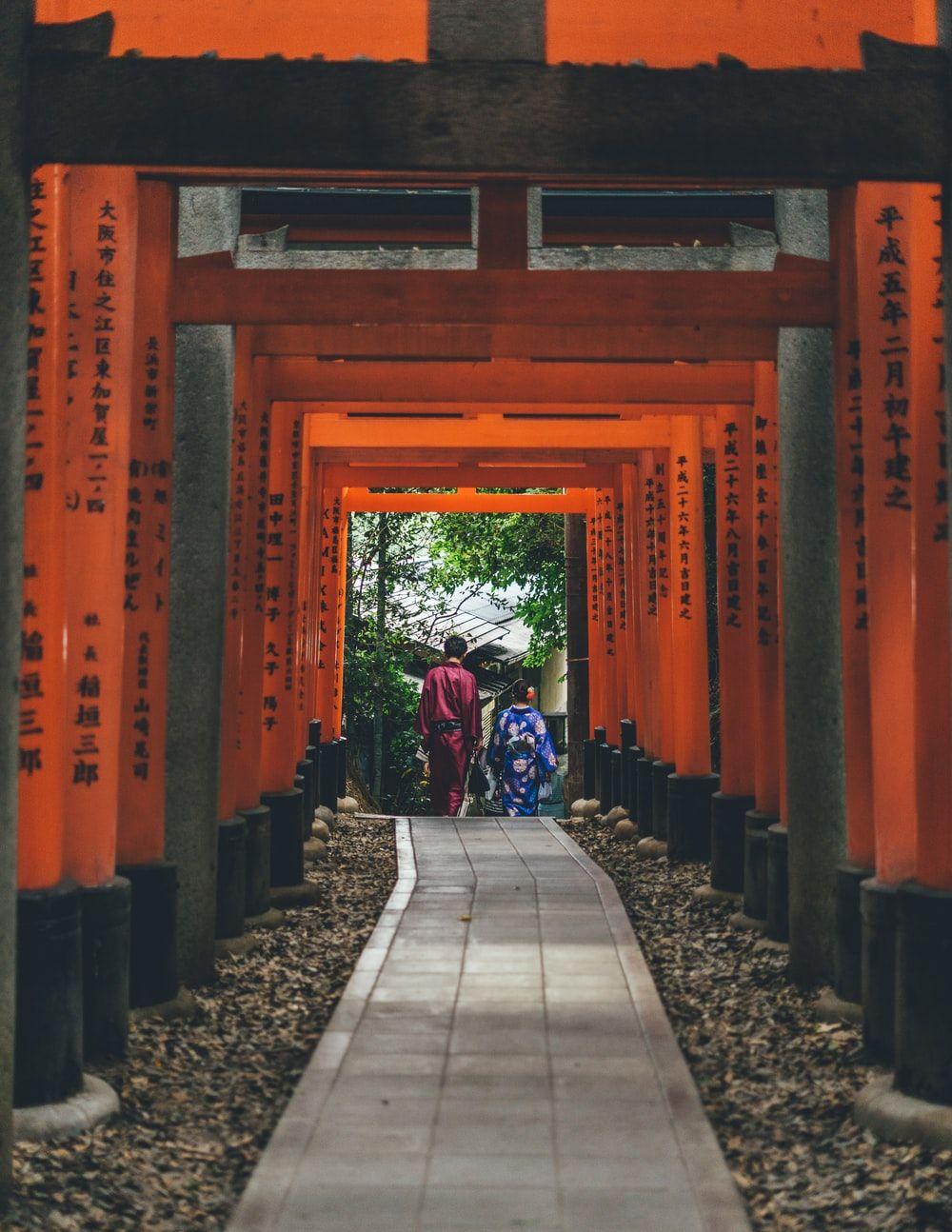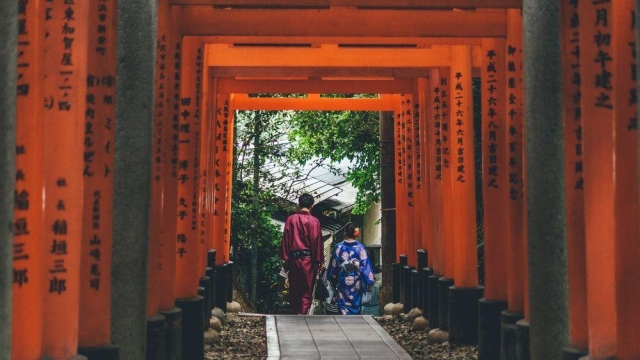
In the heart of Japan, where ancient traditions weave seamlessly into the fabric of everyday life, the sacred Shinto shrines stand as testaments to the enduring spirit of Japanese culture. These sacred spaces are more than just architectural wonders; they are vibrant centers of spirituality where the natural world and human experience converge. From the iconic torii gates that beckon visitors to the tranquil inner sanctums, each shrine tells a story of reverence, harmony, and connection with the divine.
Exploring the Shinto shrines in Japan is like stepping back in time, where whispers of the ancients can be felt with every step. Nestled in serene forests, perched on mountaintops, or situated beside flowing rivers, these shrines invite visitors to pause, reflect, and embrace the sacredness of nature. Whether it is the vibrant colors of the main hall or the gentle rustle of leaves overhead, the atmosphere is imbued with a sense of peace and spirituality that transcends the ordinary. Join us on a journey through these hallowed grounds, where each shrine offers a unique glimpse into the rich tapestry of Shinto beliefs and practices.
Historical Significance of Shinto Shrines
神社
Shinto shrines in Japan hold a profound historical significance that reflects the spiritual and cultural evolution of the nation. These sacred sites are dedicated to kami, the Shinto deities, and serve as places for worship, ceremonies, and community gatherings. Many shrines date back centuries, with some tracing their origins to the early periods of Japanese history. Their architecture, often featuring distinctive torii gates and ornate structures, tells the story of Japan’s aesthetic values and its deep-rooted connection to nature.
The construction of these shrines is often linked to significant historical events, local folklore, and the veneration of ancestral spirits. Each shrine embodies unique characteristics influenced by regional traditions and the socio-political context of its era. For example, the Ise Grand Shrine, which hosts the most sacred kami Amaterasu, is rebuilt every twenty years as part of a ritual that emphasizes renewal and continuity. This practice symbolizes the belief in impermanence and the cyclical nature of life, reflecting the Shinto philosophy of harmony with the environment.
Moreover, Shinto shrines have played a crucial role in the formation of Japanese identity. During the Meiji Restoration, shrines were instrumental in promoting nationalism and fostering a sense of unity among the Japanese people. They became symbols of cultural identity, over time intertwining with political ideologies and social movements. The reverence for these shrines remains strong, as they continue to be central to various life events, from birth and marriage to rites of passage and memorials, thereby preserving the cultural heritage of Japan for generations to come.
Architectural Features of Shinto Shrines
Shinto shrines in Japan showcase a distinctive architectural style that reflects the deep spiritual beliefs and traditions of the Shinto religion. One of the most notable features is the use of natural materials, particularly wood, which symbolizes the connection between the sacred and the natural world. The structures are often designed to blend harmoniously with their surrounding environment, emphasizing simplicity and tranquility. This reverence for nature can be seen in the way shrines are built in picturesque locations, often nestled among trees or facing scenic landscapes.
Another key characteristic of Shinto shrine architecture is the torii gate, which marks the entrance to sacred space. The torii serves as a symbolic threshold, indicating the transition from the mundane to the sacred. Typically constructed of wood or stone, torii gates are characterized by their unique design, featuring two horizontal beams supported by upright posts. Their elegant and minimalist form has become an iconic representation of Japanese spirituality, guiding visitors into the tranquil realm of the shrine.
The interiors of Shinto shrines are equally significant, with a focus on simplicity and purity. Often, the main hall, or honden, where the kami or deity resides, remains closed to the public, allowing only priests to enter. This prioritization of sanctity fosters a sense of reverence among visitors. The use of natural light and the absence of elaborate decorations further enhance the serene atmosphere, inviting contemplation and reflection. These architectural elements together create a space that not only honors the divine but also encourages a deep connection between the worshippers and the spiritual world.
Cultural Practices and Rituals
Shinto shrines in Japan serve as the focal point for a variety of cultural practices and rituals that reflect the deep spiritual connection the Japanese people have with their traditions. Among the most important practices is the purification ceremony, known as temizu, where visitors cleanse themselves at a water basin before entering the shrine. This act symbolizes the removal of impurities and serves as a preparation for receiving the blessings of the kami, the divine spirits worshipped in Shinto. It emphasizes the importance of purity in Shinto beliefs and allows individuals to mentally and spiritually ready themselves for worship.
Another significant ritual associated with Shinto shrines is the offering of prayers and the presentation of offerings. Visitors often throw coins into the offering box and bow in respect before making their wishes. This personal communication with the kami showcases the individual’s hopes and desires. It is customary to clap twice to attract the attention of the spirits, allowing ones prayers to resonate in the sacred space. Certain shrines also host seasonal festivals, known as matsuri, where the community gathers to celebrate, pay homage to the kami, and participate in traditional dances, music, and other festivities that strengthen communal bonds and cultural identity.
Additionally, the practice of omamori, or protective charms, has a significant presence at these shrines. Visitors may purchase omamori for various purposes, such as health, safety, or success in studies. These charms symbolize a tangible connection to the divine and offer reassurance in daily life. The rituals and cultural practices surrounding Shinto shrines not only enhance spiritual experiences but also preserve Japan’s rich cultural heritage, fostering a sense of community and continuity across generations.
Exploring Famous Shrines Across Japan
Japan is home to thousands of Shinto shrines, each offering a unique glimpse into the traditions and spirituality of the ancient culture. One of the most iconic is Fushimi Inari Taisha in Kyoto, renowned for its thousands of vermillion torii gates that wind their way up Mount Inari. The shrine is dedicated to Inari, the god of rice, and its captivating trails draw both pilgrims and photographers alike, creating a magical atmosphere, especially at dawn and dusk.
Another notable site is Meiji Jingu, located in Tokyo. This shrine honors Emperor Meiji and Empress Shoken, and is nestled within a lush forested area that feels worlds away from the bustling city. Visitors can enjoy the serene pathways leading to the main hall, often finding themselves partaking in traditional Shinto practices, such as purification rituals and prayer. The blend of nature and spirituality offers a peaceful retreat from urban life.
Hiroshima’s Itsukushima Shrine is famed for its stunning torii gate that appears to float on water during high tide. This UNESCO World Heritage site showcases the harmony between architecture and the natural landscape, making it a breathtaking sight. The shrine’s history dates back to the 6th century and is intricately tied to Japanese maritime culture, attracting visitors who seek to experience the rich heritage of Shinto traditions in such a picturesque setting.
